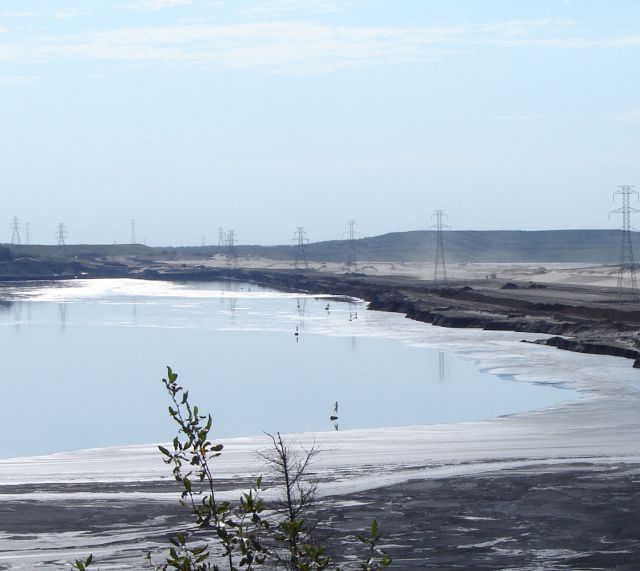
REPORT: Oil Sands Companies Endorse Elevated Cancer Risk for Indigenous Communities
February 5, 2025
- •
- •
- •

Syncrude Mildred tailings pond. Photo: J. Hildebrand
By Phillip Meintzer
New evidence from an Alberta government report shows that four Canadian oil sands companies endorse the elevated risk of cancer for Indigenous communities. It stems from a report that investigated the potential release of treated oil sands tailings into the Athabasca River.
A few years ago, the federal and provincial governments began talks to allow oil sands operators in northern Alberta to release treated tailings into the Athabasca River. This practice was previously banned for decades, with companies required to store tailings in large “ponds.” The potential release of tailings into the environment has been largely opposed by Indigenous communities in the region.
The report, Oil Sands Mine Water Science Team – final technical reports and commentary, was published by the Alberta government on Dec. 5, 2024, with more than 3,300 pages. It includes a main report, along with commentary reports from Indigenous communities, industry, and government. According to a government document from January 2022, these final technical reports were supposed to have been published by May 2022, making it more than two years overdue.
Within the health and ecological risk assessment of the report (beginning on page 2,712), the Indigenous caucus commented that: “Alberta did not take the time to establish a meaningful process for Indigenous communities to provide any community-specific information, such as country food consumption data.” In addition, they state that the risk assessment did not consider a “worst-case exposure scenario,” and that it also “mischaracterized risks associated with mercury and naphthenic acids.”
Perhaps the most frightening aspect of the report, is that even with the shortcuts and poor assumptions identified by the Indigenous caucus, the risk assessment still found an elevated risk of cancer for Indigenous communities. However, the authors characterized the cancer risk as negligible, which the Indigenous caucus felt was dismissing and downplaying the risk to their communities.
Due to these gaps and deficiencies which include an elevated risk of cancer, the Indigenous caucus opted to not endorse this section of the report. However, the report was notably endorsed by the industry caucus including representatives from Suncor Energy, Syncrude Canada, Imperial Oil, Canadian Natural Resources Limited (CNRL), and Canada’s Oil Sands Innovation Alliance.
These statements demonstrate that industry is willing to risk the health and safety of Indigenous communities if it helps them get rid of the mounting problem of tailings ponds.
Background:
The report and commentary were compiled by the Oil Sands Mine Water Science Team, which was established in August 2020 to report on six information gaps to help inform provincial regulatory requirements for the release of oil sands tailings by 2023. Representatives from both the provincial and federal governments, the Alberta Energy Regulator, oil sands companies, and at least six First Nations participated in the team.
A human and ecological health risk assessment — found 941 pages deep into the report — was among the six gaps the report intended to address. Each caucus within the science team (i.e., Indigenous, industry, or government) were given the opportunity to comment on the report and to identify any gaps and deficiencies.